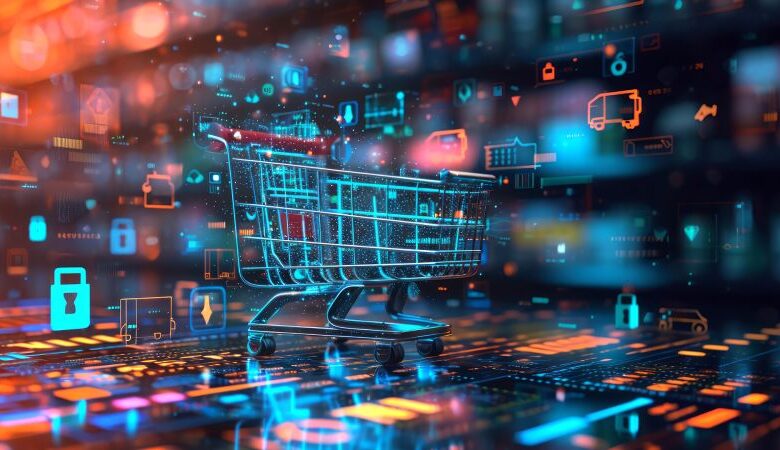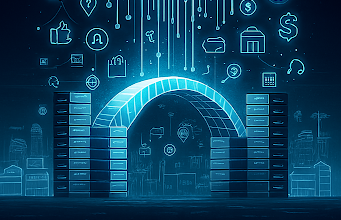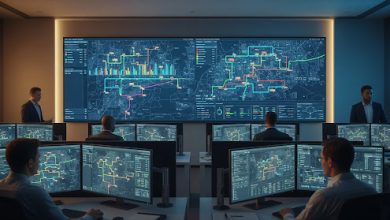
A key determinant of customer satisfaction is last-minute delivery. Many businesses consider it to be a final step in the supply chain process. This procedure is all about shipping goods from a particular location to the client’s places or retail outlet. Last-mile delivery is considered crucial in today’s retail industry because of the way customers anticipate prompt and dependable deliveries in today’s world.
A slow or ineffective delivery experience can irritate customers, decline revenues, and harm a brand’s reputation. Making last-mile deliveries efficiently helps minimize all kinds of operating expenses. This helps run businesses smoothly and improve customer experiences. 53% of shipping expenses are related to last-mile delivery alone, and when done inefficiently, they can swiftly increase. Therefore, organizations must increasingly adopt innovative last-mile delivery strategies.
Retail IT services can help find and implement these strategies. It can also ensure that the last-mile delivery is efficient enough to improve customer satisfaction, optimize operations, and save costs in and beyond 2025.
Innovative Strategies for Efficient Last-Mile Delivery
Companies with retail industry solutions can overcome the aforesaid challenges involved in last-mile delivery and adopt a proactive approach. By making use of advanced tech and operations refinement, they can deliver orders much quicker. Here are some of the strategies that companies can use to rethink their last-mile deliveries in 2025.
-
Providing Flexibility in Delivery Options
Customers are expecting more control over when and how their products get delivered. By providing different types of fulfillment options, IT solutions for retail industry can assist businesses in meeting this demand. This gives customers the freedom to select their delivery alternatives, including curbside pickup, buying online and in-store pickup (BOPIS), or shipping straight from their websites to the store.
Capacity planning is another area where retail IT services may help manage supply and demand in retail establishments. This makes it possible for businesses to deliver goods like groceries on the same day and to schedule delivery for larger items like furniture in advance. The ability to offer various delivery times according to the product guarantees efficient logistics.
-
Improving Real-time Visibility and Transparency
Companies should keep customers informed and engaged by regularly giving updates on when orders are being processed and when they should be arriving or delivered. Retail IT solutions for order management, transportation management, and route optimization can help in enabling this real-time visibility and transparency.
These solutions can update customers with their order status through their preferred communication channels. Retailers can significantly improve the customer experience by refining how often they communicate to avoid conveying too much information at once.
They can also increase the efficiency of communication between customers and delivery personnel directly. These retail digital transformation approaches help companies prevent delays, missed deliveries, and any frustrations that come with inefficiencies.
-
Enabling Contactless Delivery
The demand for contactless delivery has increased in recent years. Companies can fulfill this demand using retail technology solutions to provide electronic proof of delivery (ePOD) at the time of delivery.
ePOD is useful only for small packages, while larger products require in-person acceptance and installation assistance. Retail stores can give delivery teams mobile apps that allow them to sign for deliveries digitally, and handle returns smoothly. They can also have disinfection protocols in place to ensure that parcels are delivered safely. These steps let businesses do contactless delivery, improve safety, and also cut costs and risks.
-
Empowering Cross-functional Intelligence
The success of last-mile delivery depends on how well the delivery team is supported with cross-functional intelligence. Retail industry solutions can empower every stakeholder in the delivery process to provide relevant communications to customers at the right time.
Customer service teams with real-time shipment tracking can keep customers updated. Similarly, dispatchers can use consumer affinities to personalize communications and schedule accurate delivery times. Retailers can further provide continuous training on the latest technology updates to increase productivity.
-
Automating Driver Dispatch and Route Optimization
One of the key tactics to guarantee on-time delivery and client satisfaction is route optimization. IT solutions for retail industry can replace manual dispatching, which can cause delays, higher fuel expenses, and driver fatigue. These solutions can automatically assign orders based on driver availability and their nearest deliverable location.
Retail IT services also help in assessing traffic conditions, vehicle capacity, and delivery priorities to reroute deliveries to avoid delays and disruptions.
Bottom Line
Customer experience can be easily influenced by how well a company offers its last-mile delivery. Companies with innovative strategies and retail IT solutions to implement them can achieve efficient last-mile delivery. They can prevent delays, remove inefficiencies of manual routing, and improve brand loyalty by fulfilling the customers’ delivery needs.
With advancements in technology, the future of last-mile delivery will be more autonomous. Using drones, AI-powered logistics, and prediction tools, businesses can speed up delivery times and cut down transportation costs. It also means less heavy work for humans and improved operational efficiency. Businesses that embrace the new technologies and keep refining their strategies can deliver service quickly and their customers will be satisfied not only in 2025 but also in the future as well.






